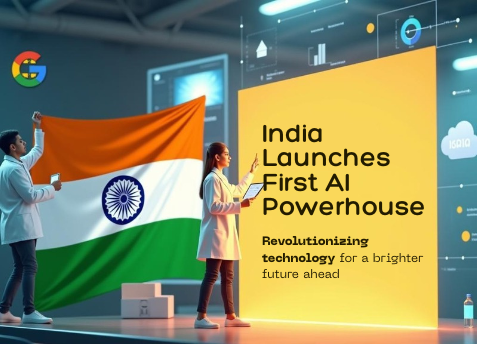Is this India’s First AI Powerhouse ? Here’s What You Should Definately Know

On a clear October morning, a modest ceremony in Visakhapatnam quietly flipped a page in India’s tech story. Google Cloud and the TechBharat Research Foundation opened an AI Centre of Excellence for Public Good — not a splashy vanity lab but an explicitly practical hub aimed at health, agriculture, and public services. If you follow policy and product closely, this is the kind of plant that can grow into real, everyday impact.
The lab’s ambition is straightforward: build AI that understands Indian contexts — low-resource languages, small-holder agriculture patterns, and public-health signals — and make it safely usable by states, startups, and non-profits. The choice of Visakhapatnam is deliberate: it pairs local data centre expansion, improving subsea connectivity, and state incentives with an intent to move work outside the usual metro loop.
A practical lab, not a research ivory tower
Many AI centres focus on papers. This one is framed for pilots. Expect three immediate emphases: (1) language & datasets — models tuned for Hindi, Tamil and other low-resource languages; (2) applied pilots — crop forecasting, early-warning health signals, local governance tools; (3) partnerships — universities, startups and state governments running co-created pilots.
“Make AI that understands India — not the other way round.” — paraphrase of the lab’s stated mission
Past → Present → Near Future
- Past: Years of policy talk and pilot projects — IndiaAI, academic labs, and corporate initiatives laid groundwork.
- Present: Google Cloud + TechBharat launch the Centre in Visakhapatnam to focus on public-good pilots and language modeling.
- Next 1–3 years: Localized model releases, state partnerships, and talent programs that feed applied AI roles in the region.
Key stats & signals
What to expect — short-term and longer-term
In the months ahead expect a steady stream of pilots: model demos for crop yield predictions, language-aware chat assistants for public helplines, and anonymized health-data dashboards for early-warning signals. Over a longer horizon, if models and governance practices scale well, this Centre could help set national norms on dataset standards, model audits and public-purpose governance.
Risks — and why they matter
No hub is immune to policy friction. Key risks include data governance ambiguity, talent competition that drains smaller startups, and the perennial challenge of turning pilots into production systems. How the Centre approaches privacy, local consent, and model audits will determine whether it becomes a template or a talking point.
Quick FAQ
Q: Is this a research-only lab?
A: No — the stated mandate prioritizes public-good pilots and practical deployments alongside research.
Q: Will the Centre hire locally?
A: Yes — expect calls for engineers, data scientists, product managers, and policy experts; a talent pipeline is part of the Centre’s plan.




